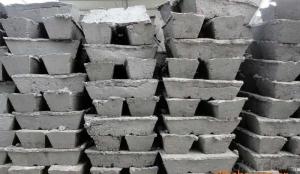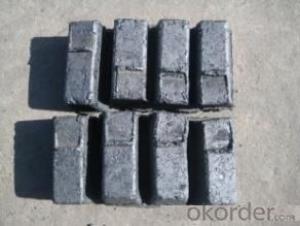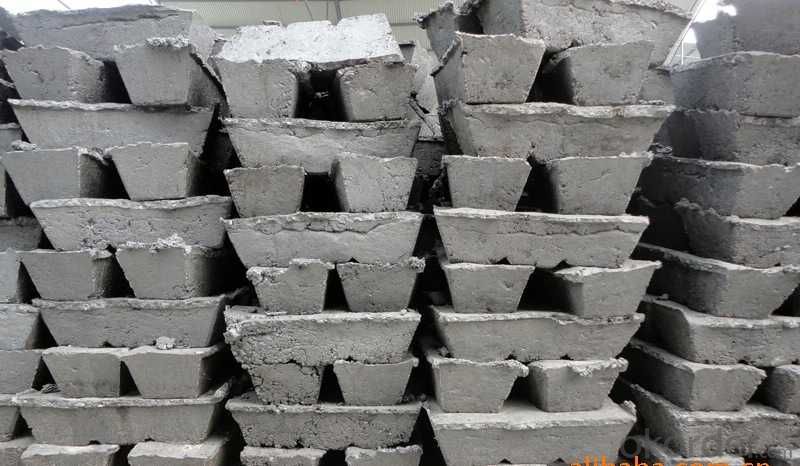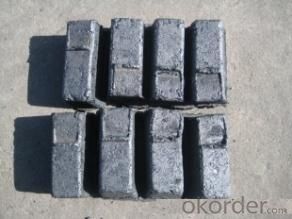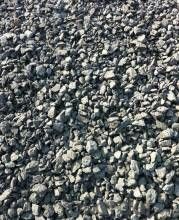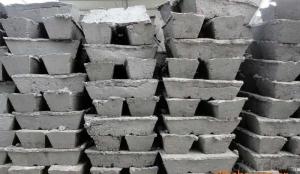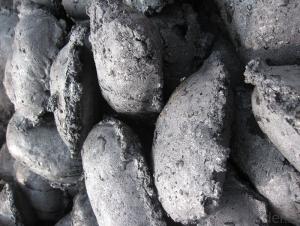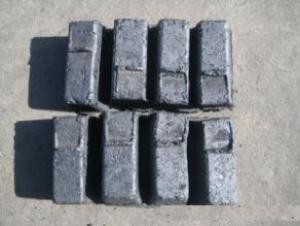Carbon Electrode Paste With Ash 4%-7% And High Quality
- Loading Port:
- Lianyungang
- Payment Terms:
- TT or LC
- Min Order Qty:
- 20 m.t.
- Supply Capability:
- 800 m.t./month
OKorder Service Pledge
OKorder Financial Service
You Might Also Like
Product Description
Carbon Electrode Paste is a self-baking electrode used in submerged arc furnaces for delivering power to the charge mix. Electrode Paste is added to the top of the electrode column in either cylindrical or briquette form. As the paste moves down the electrode column the temperature increase causes the paste to melt and subsequently bake forming a block of electrically conductive carbon. Electrode Paste is essentially a mix of Electrically Calcined Anthracite (ECA) or Calcined Petroleum Coke (CPC) with Coal Tar Pitch.
Carbon Electrode Paste Specification:
| PARAMETER UNIT GUARANTEE VALUE | ||||||
| Ash.( % ) | 4.0 max | 5.0 max | 6.0 max | 7.0 max | 9.0 max | 11.0 max |
| V.M (%) | 12.0-15.5 | 12.0-15.5 | 12.0-15.5 | 9.5-13.5 | 11.5-15.5 | 11.5-15.5 |
| Compress Strength. | 18.0 min | 17.0 min | 15.7 min | 19.6 min | 19.6 min | 19.6 min |
| Specific Resistance | 65 max | 68 max | 75 max | 80 max | 90 max | 90 max |
| Bulk Density | 1.38 min | 1.38 min | 1.38 min | 1.38 min | 1.38 min | 1.38 min |
Package: The cargo is package in jumbo bag or to be discussed with the buyer and as buyer's request.
Picture:
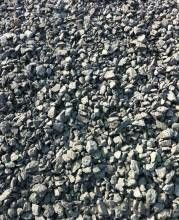
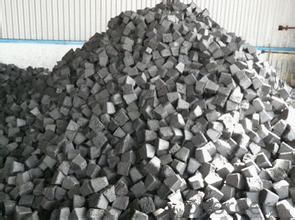
- Q: Process for producing carbon fiber board
- The world produces two types of carbon fibers. One is the PAN based carbon fiber, which is made from polyacrylonitrile and the other is an asphalt based carbon fiber, which is distilled from coal, petroleum and synthetic asphalt into bitumen, and then polymerized into fibers.On the strength of carbon fiber PAN based carbon fiber to Youding asphalt base, so overwhelming absolute in the production of carbon fiber in the world.
- Q: What are the health effects of carbon monoxide poisoning?
- The human body can experience serious health effects due to carbon monoxide poisoning. When carbon monoxide (CO) is inhaled, it quickly enters the bloodstream and attaches itself to hemoglobin, which is responsible for carrying oxygen in red blood cells. As a result, the blood's ability to transport oxygen throughout the body is reduced, causing oxygen deprivation known as tissue hypoxia. The symptoms of carbon monoxide poisoning can vary depending on the level and duration of exposure. Common symptoms include headache, dizziness, nausea, confusion, weakness, and shortness of breath. These symptoms can easily be mistaken for other illnesses, making carbon monoxide poisoning particularly dangerous as it can go undetected until it reaches critical levels. In severe cases, carbon monoxide poisoning can lead to loss of consciousness, seizures, coma, and even death. Prolonged or repeated exposure to lower levels of carbon monoxide can also result in long-term health problems, including memory issues, difficulty concentrating, mood changes, and cardiovascular complications like heart disease. Certain populations, such as young children, pregnant women, the elderly, and individuals with pre-existing heart or lung conditions, are more vulnerable to the effects of carbon monoxide poisoning. Additionally, being exposed to high levels of carbon monoxide in enclosed spaces like homes with faulty heating systems or car garages can pose a significant risk. To prevent carbon monoxide poisoning, it is crucial to ensure proper ventilation in living spaces and regularly maintain fuel-burning appliances like furnaces, water heaters, and stoves. Installing carbon monoxide detectors in homes is also highly recommended as they can provide early warnings of dangerous gas levels. If carbon monoxide poisoning is suspected, immediate action should be taken to remove oneself from the source of exposure and seek medical attention. Medical professionals may administer oxygen therapy to increase blood oxygen levels and aid in the removal of carbon monoxide from the body. In conclusion, carbon monoxide poisoning can have severe health effects, ranging from mild symptoms to life-threatening conditions. Being aware, taking preventive measures, and responding promptly are crucial in safeguarding individuals from the dangers of carbon monoxide exposure.
- Q: How does carbon dioxide contribute to ocean acidification?
- Carbon dioxide contributes to ocean acidification through a process called carbonic acid formation. When carbon dioxide dissolves in seawater, it reacts with water molecules to form carbonic acid. This reaction increases the concentration of hydrogen ions in the water, leading to a decrease in pH, making the water more acidic. As carbon dioxide emissions from human activities, particularly the burning of fossil fuels, continue to increase, more and more carbon dioxide is being absorbed by the oceans. This excessive absorption is disrupting the natural equilibrium that exists between carbon dioxide in the atmosphere and in the ocean, resulting in a surplus of carbon dioxide in the seawater. The increased acidity of the seawater can have severe consequences for marine life. Many marine organisms such as corals, shellfish, and certain types of plankton depend on calcium carbonate to build their shells or skeletons. However, in more acidic water, the availability of carbonate ions, which are necessary for the formation of calcium carbonate, decreases. As a result, these organisms struggle to build and maintain their protective structures, making them more vulnerable to predation and other threats. Ocean acidification also affects the growth, development, and behavior of many other marine species. For instance, acidification can disrupt the reproductive cycles of fish and alter the behavior of some species, making them more prone to predation or negatively impacting their ability to find food or mates. Furthermore, ocean acidification can have cascading effects on entire marine ecosystems. Many species in the ocean are interconnected in complex food webs, and any disruption to one species can have far-reaching consequences on others. For example, if the population of a certain fish species declines due to the impacts of acidification, it can have a ripple effect on the entire food chain, affecting the abundance and distribution of other species. In summary, carbon dioxide contributes to ocean acidification by dissolving in seawater and forming carbonic acid, which increases the concentration of hydrogen ions and decreases the pH. This process can have detrimental effects on marine organisms, particularly those that rely on calcium carbonate for their shells or skeletons. It can also disrupt the growth, development, and behavior of various marine species and have cascading impacts on entire ecosystems.
- Q: How does carbon impact soil health?
- The role of carbon in maintaining and improving soil health cannot be overstated. Carbon is a vital component of organic matter, which is crucial for fertile and productive soils. By decomposing plant and animal residues, carbon is introduced into the soil, resulting in better soil structure, increased water holding capacity, and improved nutrient availability. Soil structure is greatly influenced by carbon, as it binds with soil particles to form aggregates. These aggregates create pore spaces within the soil, allowing for improved aeration, water infiltration, and root penetration. The presence of these pore spaces encourages the growth of beneficial soil organisms like earthworms and microorganisms, which further contribute to soil health. In addition to enhancing soil structure, carbon also plays a critical role in improving the water holding capacity of soils. Organic matter, which is rich in carbon, acts like a sponge, holding moisture and preventing water runoff. This is especially important in regions with arid or drought-prone climates, where water scarcity is a concern. Increased water retention not only helps plants withstand dry periods but also reduces erosion and nutrient leaching. Furthermore, carbon is an essential nutrient for soil microbes. Microorganisms, such as bacteria and fungi, break down organic matter and release nutrients that plants require for growth. Carbon-rich soils provide an ideal environment for these microorganisms to thrive, resulting in greater nutrient availability for plants. Additionally, as microorganisms decompose organic matter, they release beneficial substances like enzymes and hormones that support plant growth and overall soil health. To summarize, the impact of carbon on soil health cannot be ignored. It improves soil structure, enhances water holding capacity, and promotes nutrient availability. Therefore, it is crucial to manage and increase carbon content in soils through practices like incorporating organic amendments, implementing cover cropping, and minimizing tillage. These actions can significantly benefit agricultural productivity and sustainability.
- Q: How are carbon compounds classified?
- Carbon compounds are classified based on their structural arrangement, functional groups, and the type of bonds they form with other elements.
- Q: How are fossil fuels formed from carbon?
- Fossil fuels are formed from carbon through a natural process that takes millions of years. The process begins with the remains of plants and animals that lived millions of years ago. These remains, which contain carbon, get buried under layers of sediment in oceans, swamps, and other bodies of water. Over time, the pressure from the layers of sediment and the heat from the Earth's crust cause a process called diagenesis to occur. During diagenesis, the organic matter in the remains undergoes chemical changes, transforming it into a substance known as kerogen. As more layers of sediment continue to accumulate, the temperature and pressure increase further. Eventually, the kerogen undergoes a process called catagenesis, where it is heated to even higher temperatures. This causes the kerogen to break down and transform into liquid and gaseous hydrocarbons, which are the main components of fossil fuels. The liquid hydrocarbons form what is known as crude oil or petroleum, while the gaseous hydrocarbons form natural gas. Both of these fossil fuels can be extracted from the Earth's crust through drilling. In summary, fossil fuels are formed from carbon through a complex and lengthy process involving the burial, pressure, and heat of organic matter over millions of years. This process transforms the carbon-rich remains into hydrocarbons, which become the valuable resources that we use as fossil fuels today.
- Q: What are the benefits of carbon-neutral technologies?
- Carbon-neutral technologies play a crucial role in addressing climate change and creating a sustainable future due to their numerous benefits. Firstly, these technologies effectively reduce greenhouse gas emissions, especially carbon dioxide, which is the primary contributor to global warming. By transitioning to carbon-neutral technologies, we can significantly decrease our carbon footprint and mitigate the adverse effects of climate change. Secondly, carbon-neutral technologies promote energy efficiency and the conservation of resources. Many of these technologies, such as solar and wind power, utilize endless and easily accessible natural resources. This reduces our dependence on finite fossil fuels, thus safeguarding the environment and enhancing energy price stability. Moreover, embracing carbon-neutral technologies leads to improved air quality and public health. Conventional energy sources like coal and oil contribute to air pollution and have detrimental effects on human health, including respiratory and cardiovascular issues. By adopting cleaner technologies, we can reduce air pollution and enhance the well-being of individuals and communities. Additionally, carbon-neutral technologies can stimulate economic growth and create job opportunities. The development, installation, and maintenance of renewable energy infrastructure require skilled workers, leading to job creation and economic development. This transition also reduces reliance on imported energy sources, thereby enhancing energy independence and national security. Lastly, by embracing carbon-neutral technologies, we can demonstrate global leadership and contribute to international efforts in combating climate change. Countries that adopt these technologies serve as role models for others and encourage global cooperation in reducing greenhouse gas emissions. In conclusion, carbon-neutral technologies offer a wide range of benefits that are multidimensional. They not only help mitigate climate change and reduce greenhouse gas emissions but also promote energy efficiency, enhance air quality, stimulate economic growth, and contribute to global efforts in creating a sustainable future.
- Q: How does carbon affect the properties of steel?
- Carbon is a crucial element in the production of steel and plays a significant role in determining its properties. The amount of carbon present in steel has a direct impact on its hardness, strength, and overall performance. By adding carbon to iron, the base metal of steel, it becomes significantly stronger and more durable. This is because the carbon atoms are able to occupy the spaces between iron atoms, preventing the metal from sliding or deforming easily. The higher the carbon content, the harder and stronger the steel becomes. Moreover, carbon also influences the steel's ability to be heat treated and its response to various manufacturing processes. When steel is heated and rapidly cooled, a process known as quenching, the presence of carbon allows for the formation of harder and more brittle structures, such as martensite. On the other hand, lower carbon content allows for the formation of softer and more ductile structures. In addition to its impact on strength and hardness, carbon also affects the steel's corrosion resistance. Higher carbon content can lead to reduced corrosion resistance, making the steel more susceptible to rust and other forms of degradation. This is why stainless steel, which contains a higher amount of chromium and low carbon content, is often chosen for applications where corrosion resistance is crucial. To summarize, carbon greatly influences the properties of steel. It enhances its strength and hardness, allows for heat treatment and response to manufacturing processes, and affects its corrosion resistance. The careful control of carbon content in steel is vital in order to achieve the desired properties for specific applications.
- Q: Carbon Finance: Carbon Finance
- Carbon finance does not have a unified concept. Generally speaking, it refers to all financial activities that serve to limit greenhouse gas emissions, including direct investment and financing, carbon index trading and bank loans. The rise of "carbon finance" stems from changes in international climate policy and, precisely, two international conventions of great significance - the United Nations Framework Convention on climate change and the Kyoto protocol. Carbon finance definition: improved use of financial capital to drive the environmental rights and interests, to the laws and regulations for support, the use of financial means in the market platform makes carbon financial products and derivatives trading or to circulation, and eventually achieve a low-carbon development, green development and sustainable development objective. The United Nations Conference on environment and Development held in June 1992 in Brazil, Rio De Janeiro, more than 150 countries have established the "United Nations Framework Convention on climate change" (United Nations Framework Convention on Climate Change, referred to as the "Framework Convention"). The ultimate goal of the Convention is to stabilize atmospheric concentrations of greenhouse gases at levels that do not harm the climate system.
- Q: How does carbon affect the acidity of oceans?
- Carbon dioxide (CO2) dissolves in seawater to form carbonic acid (H2CO3), which increases the concentration of hydrogen ions (H+) in the water, leading to ocean acidification. This decrease in pH affects marine life by hindering the ability of shell-forming organisms to build and maintain their shells, as well as impacting other vital biological processes.
Send your message to us
Carbon Electrode Paste With Ash 4%-7% And High Quality
- Loading Port:
- Lianyungang
- Payment Terms:
- TT or LC
- Min Order Qty:
- 20 m.t.
- Supply Capability:
- 800 m.t./month
OKorder Service Pledge
OKorder Financial Service
Similar products
Hot products
Hot Searches
